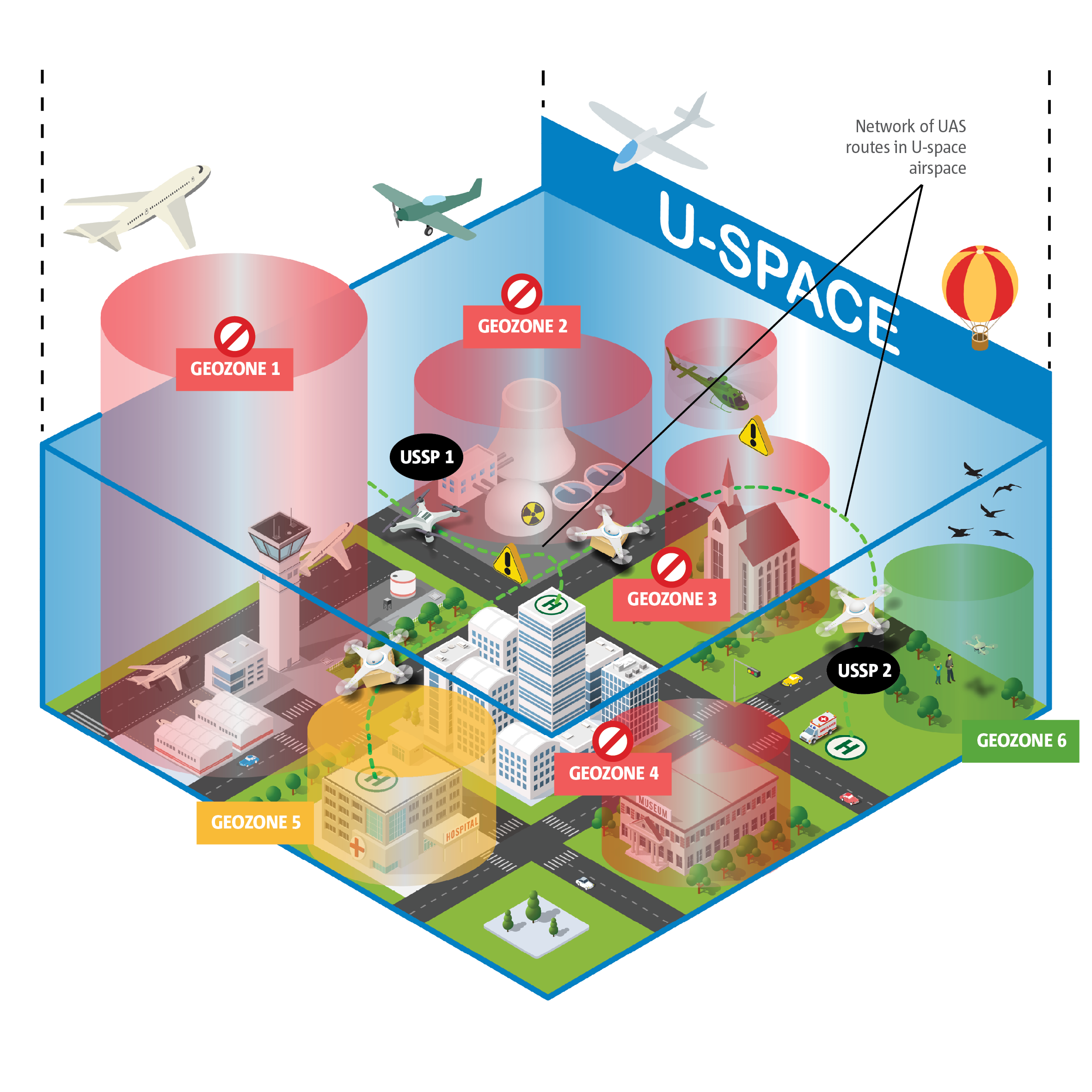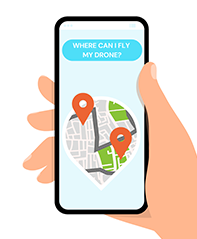Flying a drone is fun but comes with responsibilities, some of which we already highlighted in our previous guidance for drone pilots. When you are a drone operator, your drone shares airspace with other aircraft, helicopters and in future with VTOLs. Therefore you cannot just fly your drone anywhere. Knowing where to fly is very important for everyone in the air and on the ground.
Before you take to the skies
As a remote drone pilot or operator, one of the most important things you need to do before every flight is to check where you can or can’t fly your drone by checking the geographical zones before you take to the skies. Make sure you enjoy your flight or do a good day’s work with your drone without getting into trouble by breaking into an unauthorised flight zone, which could result in hefty fines or cause accidents.
- Take a look at our video ‘Drone Geographical Zones’.
Drone (UAS) geographical zones
To keep aircraft and people on the ground safe, drone geographical zones, or geo-zones, have been set up across Europe by the different States. Geo-zones are portions of airspace where drones, or to use the more official term Unmanned Aerial System (UAS), operations are facilitated, restricted or excluded. Geo-Zones are set up to:
- minimise safety risks
- protect the privacy of others
- address security issues
- deal with environmental concerns.
There are three main geo-zones for which Member States can adopt a colour coding to ensure airspace users can quickly identify what zone they refer to.

Excluded geo-zones
Flights are prohibited for operations in all or certain classes, hence drone flying is not allowed.

Restricted geo-zones
UAS operations are limited and are subject to fulfilment of the set of conditions imposed in these zones. You need prior authorisation to fly your drone since you could be near areas such as airports, heliports, national parks, military installations, hospitals, nuclear power plants or any kind of key industrial site, etc.

Facilitated geo-zones
UAS operations are facilitated in the 'Open' category, so you can fly your drone.

U-Space airspace
A portion of the lower space where operations are managed for drones and other vehicles that operate in it.
Checking a geo-zone - step by step guide
 Here some simple steps to check out the geographical zones:
Here some simple steps to check out the geographical zones:
- Select your drone weight class and plan your flight
- What do you plan to do with your drone?
- What will your flight trajectory be like?
- What is the area where you want to fly?
It is the responsibility of the drone pilot to obtain updated information about any geographical zones and comply with them before and during each flight.
- Check the National Aviation Authority (NAAs) websites and get the necessary information for the country where you want to fly your drone.
- Connect to a drone flight planning App. EASA lists the ones that exist on the NAAs’ page under ‘Where you are allowed to fly’ by country.
- Some National Aviation Authorities offer digital charts which you can check. Others have a link to updated document charts which you can download.
- On the National Aviation Authority App or website, first select the area where you want to fly your drone. You will then be able to see if you can fly there or not. If the area is restricted, you will see more information on any authorisations needed. Where the country has an App, you might even be able to apply for the authorisation to the competent authority in the App itself. In other cases, you might need to complete a form and send it to the competent authority by email. It might take up to two days to get the result of you request.
- If you have been given an authorisation to fly in a restricted area, make sure to stay within the limits of that authorisation.

Zoning areas – restrictions in altitude, time, distance, etc.
You might come across areas where flight restrictions apply or where you are simply not allowed to fly your drone at all, such as a low-level flying area for the military. There is also the possibility that in some zones partial restrictions apply such as:
- You are only allowed to fly your drone below a certain altitude, set lower than the 120 meters maximum allowed by the rules in the open category.
- Flying your drone is only allowed during a specific time during the day, for example because an event is taking place nearby, e.g. a concert or a sports game.
- The horizontal distance between you and your drone may be reduced.
An aeronautical chart provides precise indications about the area you want to fly in and its restrictions. Google maps can also be a source for a quick inspection of the area you wish to fly in.
Geo-awareness system
Thanks to the in-built geo-awareness system in some drones, they can detect a potential breach in the geo-zone limitations and alert the remote pilot, so that you can take immediate and effective action to prevent the breach. Some of the latest models of drones include this system, also referred to as geo fencing.
It is based on the geographical data provided and regularly updated by Member States. If your drone has a geo-awareness system, it is the responsibility of the drone operator to keep it updated for the drone/s you own.
Drone fly away
A fly away is when a drone loses connection with the pilot’s controls and simply flies away uninterrupted. This happens also in combination with a loss in the GPS signal, so the ‘Return to Home (RTH)’ option cannot be initiated.
This is a type of occurrence that drone operators need to report, no matter what zone you are flying in.This may be:
- to the National Aviation Authority in the country you are operating
- in the event you are given an authorisation to fly near a controlled airport or a flight zones where drone operations are restricted, you also need to inform Air Traffic Control immediately with information on the course the drone took, altitude, speed and (if possible) the remaining battery left
- to your insurance company too Drone manufacturers that offer drones with RTH would be very interested in getting your report as well. Visit their websites for more information
Stay informed and up to date – follow EASA Light
EASA will share all the latest information on drones on EASA Light.
Create an account and follow us on EASA Light to stay up to date!
